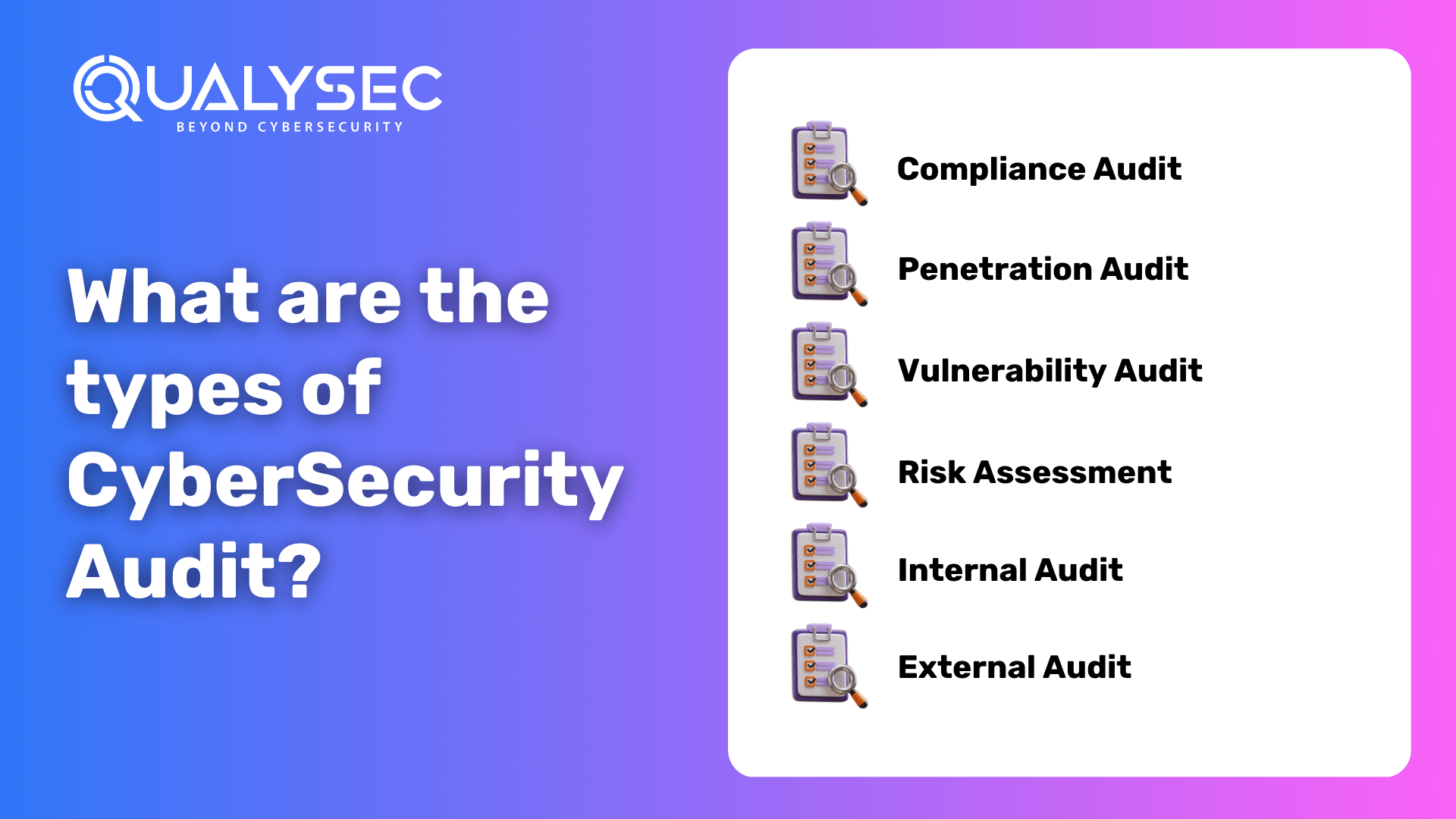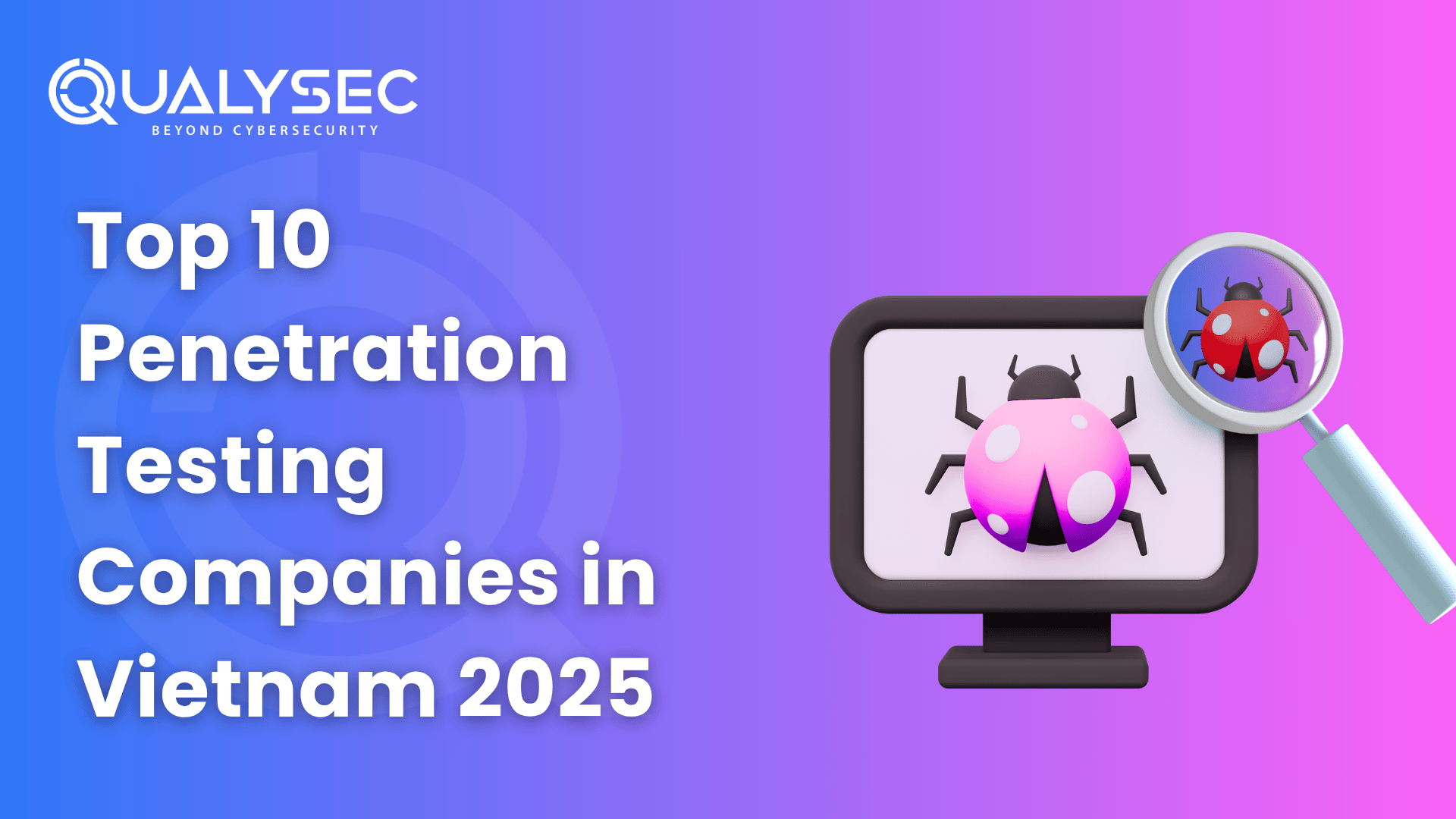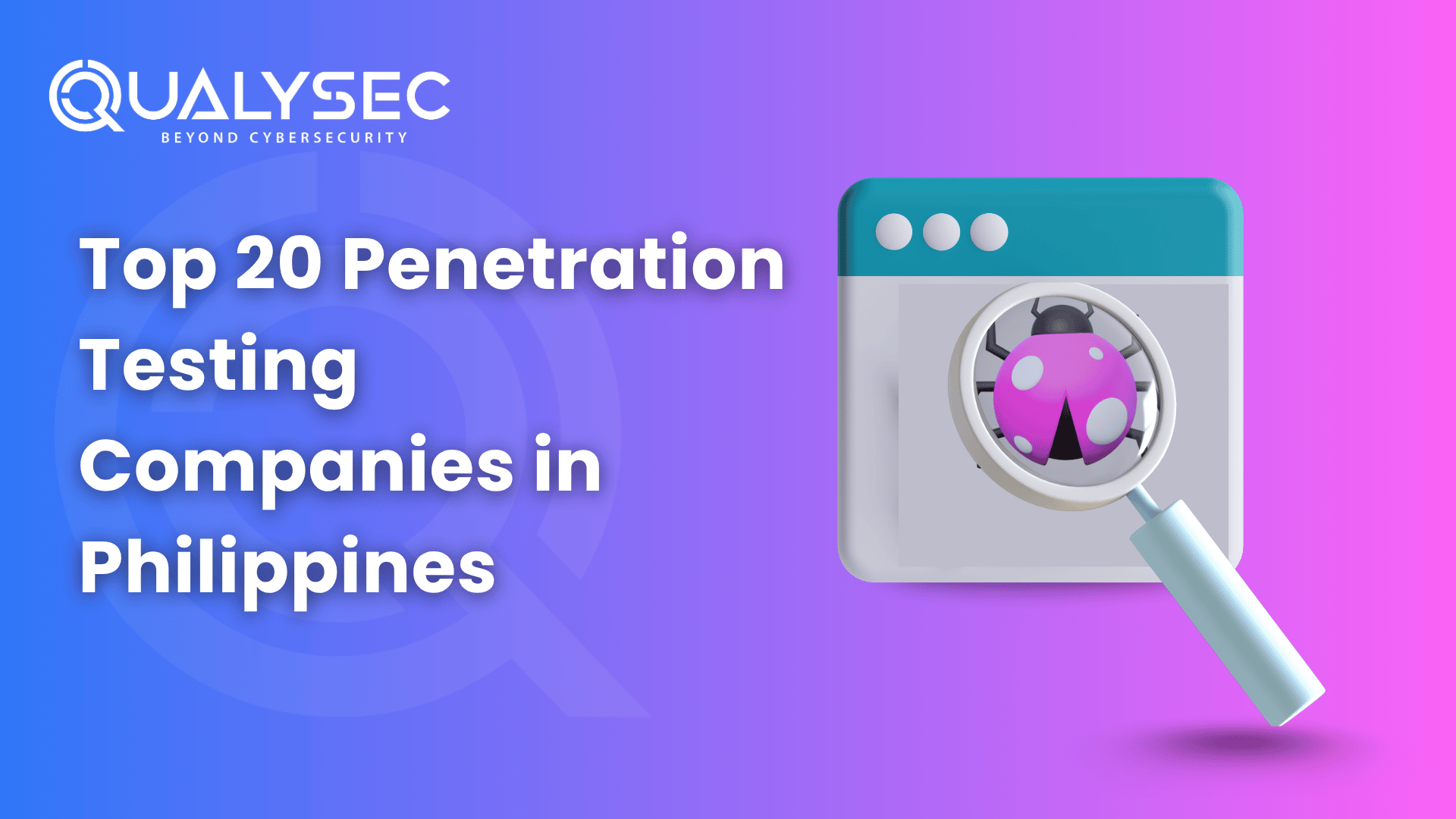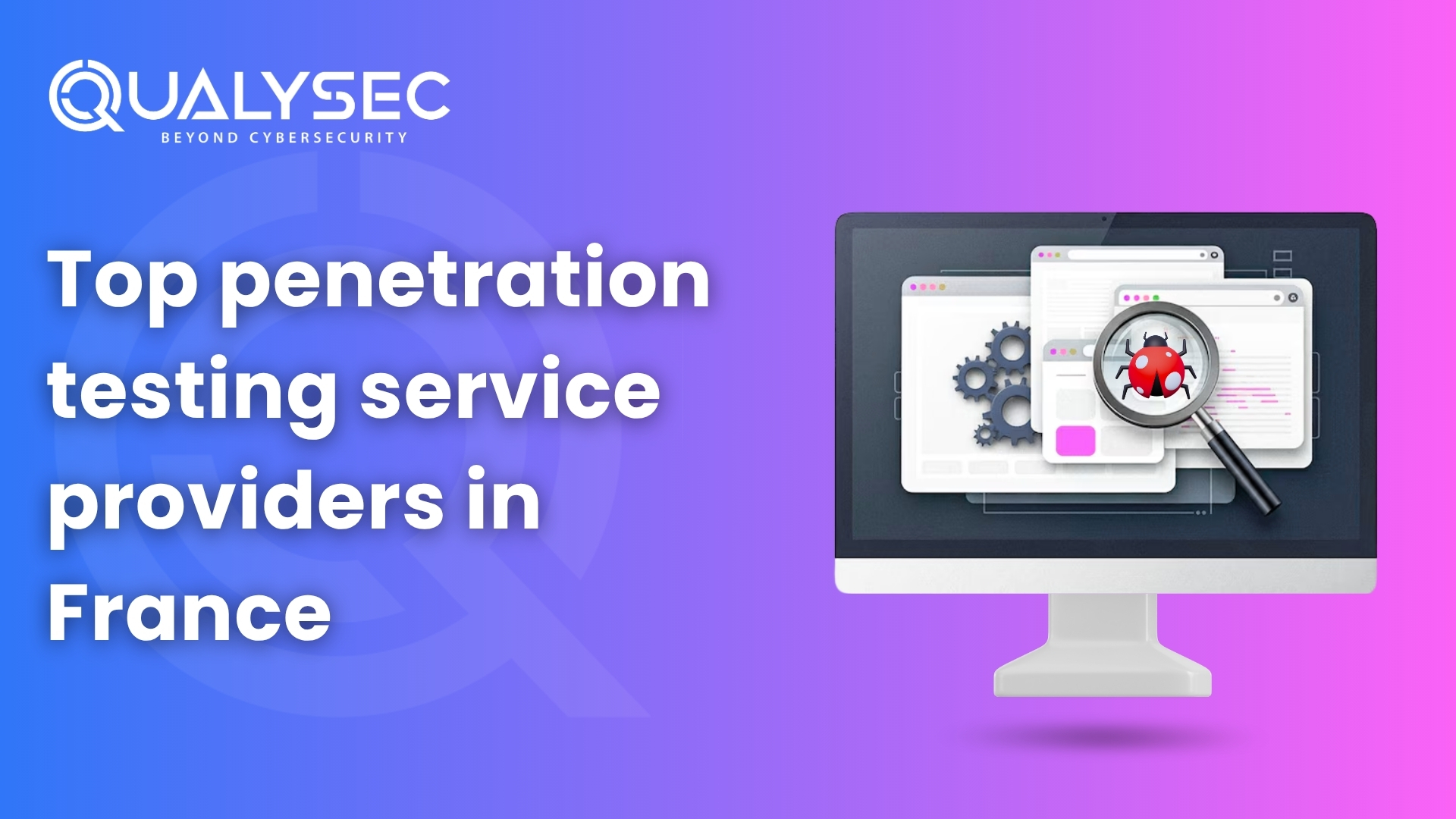With the constant global changes in technology, the growth of cybercrimes is also evolving day-by-day. These cybercriminals keep adapting, updating new techniques, and constantly changing strategies to hamper the security system for their benefit. All these malicious activities have proven to cause significant risks for all businesses and organizations. Cyberattacks and vulnerabilities can shake the infrastructure of any organization causing exposure of confidential data, ruining brand reputation, and causing financial setbacks.
So what can a company or organization do to remain safe and secure from various security threats? Security or cybersecurity audits can significantly manage an organization’s cybersecurity risk environment and prepare it to deal with security threats.
This blog revolves around the security audit, its types, checklists, significance, and more.
What is a CyberSecurity Audit?
A security audit, also known as a cybersecurity audit, is a comprehensive assessment of the organization’s security infrastructure, policies, networks, and application software to assess the effectiveness of its security controls and measures. It aims to identify vulnerabilities and security threats to the organization’s digital assets, such as sensitive data, technology infrastructure, and intellectual property.
Security audits ensure the organization’s security measures align with the best practices, compliance requirements, and internal security policies.
A comprehensive security audit for an organization will assess security controls such as:
- Network vulnerabilities
- Applications and software
- Employees’ patterns for saving and sharing highly sensitive data
- The organization’s overall security techniques
What are the types of Cyber Security Audit?

Compliance Audit:
A compliance audit is one of the most common security audits. This audit assesses whether the organization complies with industry regulations and standards such as HIPAA, GDPR, PCI-DSS, and ISO 27001. Compared to other audits, compliance audits are less time-consuming and cost less. However, they may not completely check the organization’s internal security posture. The primary goal of this audit is to identify any gaps company’s compliance and ensure that they meet the compliance requirements.
Penetration Audit:
Penetration testing is another form of information security audit. Penetration testing simulates real-world-attack on the organization’s systems and applications software to identify vulnerabilities and potential security threats. This security audit aims to find vulnerabilities and informs the organization’s internal security team to detect and take necessary action before they get exposed to real-world attackers. Unlike compliance, penetration audits require time and include costs for securing the organization’s security system.
Vulnerability Audit:
A vulnerability audit or vulnerability assessment is another popular way of security testing. In this process, automated tools are employed to scan the organization’s system, find potential vulnerabilities, and rate them as per their severity. Vulnerability assessment aims to identify vulnerabilities, analyze them, rate them, and find ways to fix them to improve the organization’s security posture.
Risk Assessment:
Risk assessment focuses on the overall security risks associated with the organization. It identifies potential threats and assesses the likelihood of their occurrence in the near future. However, risk assessment cannot be useful for providing the broader picture of the organization’s security.
Internal Audit:
The internal security core members of the organization generally conduct an internal security audit. In this security audit, the main purpose is to check the effectiveness of the internal security policies, procedures, and processes to satisfy the relevant regulatory compliance with suitable industry standards. More often, an internal security audit is performed to check areas of improvement and updation in technology to ensure the organization’s digital assets are secured.
External Audit:
Unlike an internal audit, an external security audit is conducted by an independent third-party cybersecurity company or individual hired by the organization. One big advantage of an external audit is that it brings unbiased and fresh perspectives to the organization. For information, external audit depends on the internal security audit team. However, they do perform their research to identify vulnerabilities and security risks and provide recommendations to the internal security team of the organization. At the same time, they are ensuring that the organization meets the compliance requirements.
How often should a Cybersecurity Audit be performed?
Generally, a security audit should be performed at least four times yearly. However, the conduct frequency can be based on the security goals, the size, and the organization’s scope. Some businesses perform security audits to meet the industry standards’ regulatory requirements. Different types of security audits have different timeframes of conduct. For instance, risk and vulnerability assessments are less time-consuming and can be performed more frequently every month. In contrast, penetration testing requires time and employs a third-party team, making it more suitable yearly.
How to perform a CyberSecurity Audit?
A security audit is an important security process and is performed with the aim of improving the organization’s security posture. Here is a step-by-step guide on how to perform a security audit for an organization:
- Planning and Scoping:
- Information Gathering
- Risk Assessment
- Security Testing and Evaluation
- Findings and Recommendations
- Reporting
Planning and Scoping
The first step to performing a security audit is to plan and scope the audit. This step is all about determining the scope of the audit. The areas that will be evaluated, the areas that will be excluded, and the resources involved (tools and techniques) are discussed. The organization can clarify its aims and objectives, such as identifying vulnerabilities and meeting compliance requirements before moving forward. The audit team will also describe the possible outcomes and time duration of the security audit.
Information Gathering:
The next step is information gathering, and the security audit team moves forward to collect relevant information about the organization’s system, policies, procedures, and system information. This collected information will help the audit team better understand the organization and quicken the vulnerability-finding process.
Risk Assessment:
The third step when conducting a security audit is risk assessment. Once the relevant information is gathered, a risk assessment is performed to determine the likelihood of the identified vulnerabilities. The audit team then rates the identified vulnerabilities and security risks on their severity to prioritize areas that require immediate improvements for the organization’s functionality.
Security Testing and Evaluation:
Next, the security audit team will perform several tests and evaluations using a comprehensive approach where automated tools and manual testing techniques are applied to assess the effectiveness of the vulnerabilities in the organization’s applications, networks, and systems. The test may involve penetration tests, vulnerability assessments, and other security audit tests.
Findings and Recommendations:
The security audits will find vulnerabilities and other related security risks by this step. The team will rank the findings based on their severity, from critical to low, and pass the information to the organization’s security team along with the recommendations for improving the organization’s overall security posture.
Reporting:
The final step of the security audit is the preparation and presentation of a report. This report is essential for the organization as it includes everything about the security audit. The report discusses the planning and scoping, vulnerabilities identified, methodology applied, findings, and recommendations. This report will help the technical team understand the areas of security their team was lacking, the potential impacts, and what practices or recommendations helped improve the organization’s security.
Why conducting a security audit is important?
Cybersecurity remains the number one concern in today’s world, where everything is interconnected. The more complex infrastructure of an organization, the more chances of vulnerability exist. Security audits break this chain by constantly scanning for weaknesses, vulnerabilities, and security threats. These security audits find locations of vulnerabilities and provide necessary security policies and recommendations.
Moreover, security auditing is important for several reasons:
- It supports organizations and businesses in finding vulnerabilities and security threats. Once found, they exploit it before it gets accessed by cyber attackers.
- Second, the security audit can prevent data breaches by providing visibility into accessing data.
- Third, security audits can support organizations in meeting compliance requirements with proper industry standards.
- Security audits can assist an organization’s internal security team in understanding the areas of improvement and necessary changes and provide recommendations to strengthen the organization’s all-around security posture.
Talk to our Cybersecurity Expert to discuss your specific needs and how we can help your business.
Cybersecurity Audit Checklist
The security audit checklist varies from organization to organization. Every organization has its complexity, aims and objectives and is different in size. A security audit checklist can be an essential guide, to begin with.
Below are the main categories that a security audit should necessarily cover.
Physical and Environment Security:
Checking if your company’s environment is secure and protected. If the servers, cameras, locks, and alarms are in place and working fine. A physical security audit checklist should include the above and find ways to secure those spaces against unauthorized access.
Network Security:
There are several tools that a company’s employees use every day, for instance, wireless networks and different software for data, system, and application protection like antivirus software. Ensuring that these tools are up-to-date, properly configured, and passwords are strong should be under the security audit checklists.
Device Security:
A security audit checklist should surely include device security. Checking if the devices used daily for data transfer is secured and updated. Find out how often the data backups are taken and what measures are opted for to protect sensitive data.
Compliance Security:
Ensuring the organization meets the regulatory and legal requirements or not. A security audit checklist also involves checking if the legal documents and policies are relevant and updated.
Personnel Security:
A security audit checklist should also include checking the essential information of the people involved in the organization, for example, checking the background of the new hires and conducting security programs for the betterment of the organization.
Cybersecurity Audit VS Penetration testing VS Vulnerability Assessment
Most of the time, people need clarification with these three terms. So, here’s a table that explains the key differences between a security audit, a penetration test, and a vulnerability assessment.
| Security Audit | Penetration Testing | Vulnerability Assessment | |
| Definition | A security audit, also known as a cybersecurity audit, is a comprehensive assessment of the organization’s security infrastructure, policies, networks, and application software to assess the effectiveness of its security controls and measures. | Penetration testing or pen test, or ethical hacking, is an authorized simulated cyberattack on digital assets to evaluate security. Pen testers use several tools, techniques, and processes to scan, find, and explain the vulnerabilities and future threats underlying in the application software network. | Vulnerability assessment is a systematic process of identifying, evaluating, and prioritizing security vulnerabilities within networks and applications. |
| Objective | The main security audit objective is to identify vulnerabilities and security threats to the organization’s digital assets, such as sensitive data, technology infrastructure, and intellectual property. | The main objective behind conducting a penetration test is to simulate an attack by identifying vulnerabilities and other risks that might be missed during a vulnerability assessment. | The main objective is to uncover potential weaknesses that might get exploited by malicious attackers, allowing proactive measures to address these vulnerabilities before they get under unauthorized access. |
| Approach | Security audit adapts a non-invasive evaluation of the organization’s security posture. | Penetration testing uses a comprehensive approach by utilizing automated tools and manual testing. | Vulnerability assessment systematically evaluates the organization’s network, systems, and applications. |
| Frequency | Yearly or as per the organization’s requirements. | Quarterly or as required by the regulation. | Regularly like quarterly or alternative months, or as needed by the industry standards. |
What are the areas covered in a Cybersecurity audit?
- Network Vulnerabilities: A network vulnerability audit includes finding the vulnerability in the organization’s networks. This includes tracking network traffic like file transfers, emails, messaging applications, and other network places that cyber attackers can exploit.
- Security Controls: Security controls involve protecting the organization’s assets by applying effective cybersecurity measures. This includes implementing policies and best practices in the organization, physical security measures such as surveillance cameras, and wireless password protection. Moreover, this also includes logical security measures like fireballs and intrusion detection systems.
- Encryption: This part of the security audit involves converting data into security codes to stop unauthorized access to the organization’s systems, applications, networks, and other devices.
- Software Systems: Security auditors examine software systems to find vulnerabilities, ensuring the software is protected from potential attacks. This also involves identifying vulnerabilities and other threats and suggesting recommendations for improvements in the software.
- Architecture: The architecture of an organization plays an important role in cybersecurity. Security auditors will evaluate whether the IT management has organizational structures and procedures that work well in maintaining the workflow without hampering the organization’s security system.
- Telecommunication Controls: Security auditors check if the telecommunication controls are working in their places on both the client and server sides. And if not, check for weaknesses and suggest improvements.
- Systems Development Audit: This part of the security audit assesses the security of an organization’s systems development lifecycle (SDLC). It also involves ensuring that the organization’s systems are under development and following industry standards.
- Information Processing: In this area of the security audit, information and relevant data are collected, stored, and managed. A security audit will study this collected information to check if they are secure and meet the compliance requirement and industry standards.
Latest Penetration Testing Report

Conclusion
A security audit is one of the important aspects when securing the organization’s security system. Now that you know what a security audit is, its types, its process, and how it’s different from vulnerability assessment and penetration testing. You should also understand that frequent security audits can reveal hidden vulnerabilities, assure compliance regulation, and build trust with customers and collaborators.
If you want to achieve cybersecurity audit checklists that cover all the significant aspects of your organization’s security posture. Connect with Qualysec. They are a team of professionals rooted in identifying vulnerabilities and suggesting best practices and recommendations for improving your organization’s security system.
Qualysec provides services like –
- Web App Pentesting
- Mobile App Pentesting
- API Pentesting
- Cloud Security Pentesting
- IoT Device Pentesting
- AI /ML Pen-testing
Qualysec plays a crucial role in assisting businesses and organizations in identifying vulnerabilities and security-related threats and providing security measures and recommendations for improving the organization’s systems, applications, networks, and software. So, Qualysec’s incredible services are the place to reach out regarding cybersecurity audits.
FAQ For Cybersecurity Audit:
1. What is a security audit?
A security audit, also known as a cybersecurity audit, is a comprehensive assessment of the organization’s security infrastructure, policies, networks, and application software to assess the effectiveness of its security controls and measures. It aims to identify vulnerabilities and security threats to the organization’s digital assets, such as sensitive data, technology infrastructure, and intellectual property.
2. How does a security audit work?
A security audit aims to test an organization’s security controls against a set of specified criteria, for instance, a comprehensive approach or regulations. A typical security audit involves planning and scoping, information gathering, risk assessment, security testing and evaluation. All these lead to documenting the whole process in the form of a report that provides findings and recommendations. Allowing the internal security team to act accordingly to fix the issues.
3. What does a security audit consist of?
A security audit consists of several things. However, it is arranged in the form of a checklist that covers the following:
- Physical and environmental security
- Network security
- Device security
- Compliance security
- Personnel security
4.How do you perform a security audit?
Performing a security audit relies on the specific standards that your organization aims to assess and can be carried out by either internal auditors or external audit professionals.


















































































































































































































































































































































0 Comments